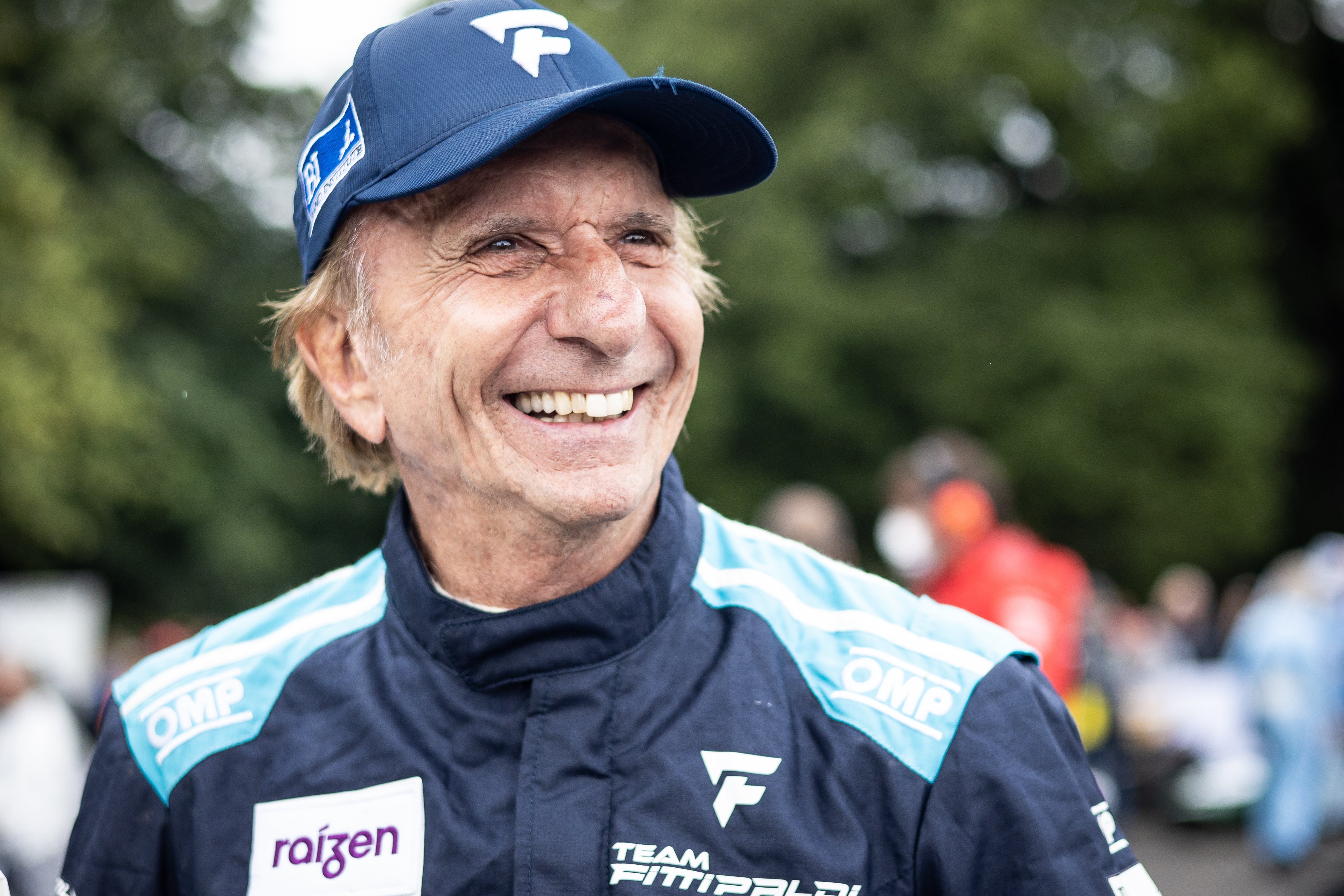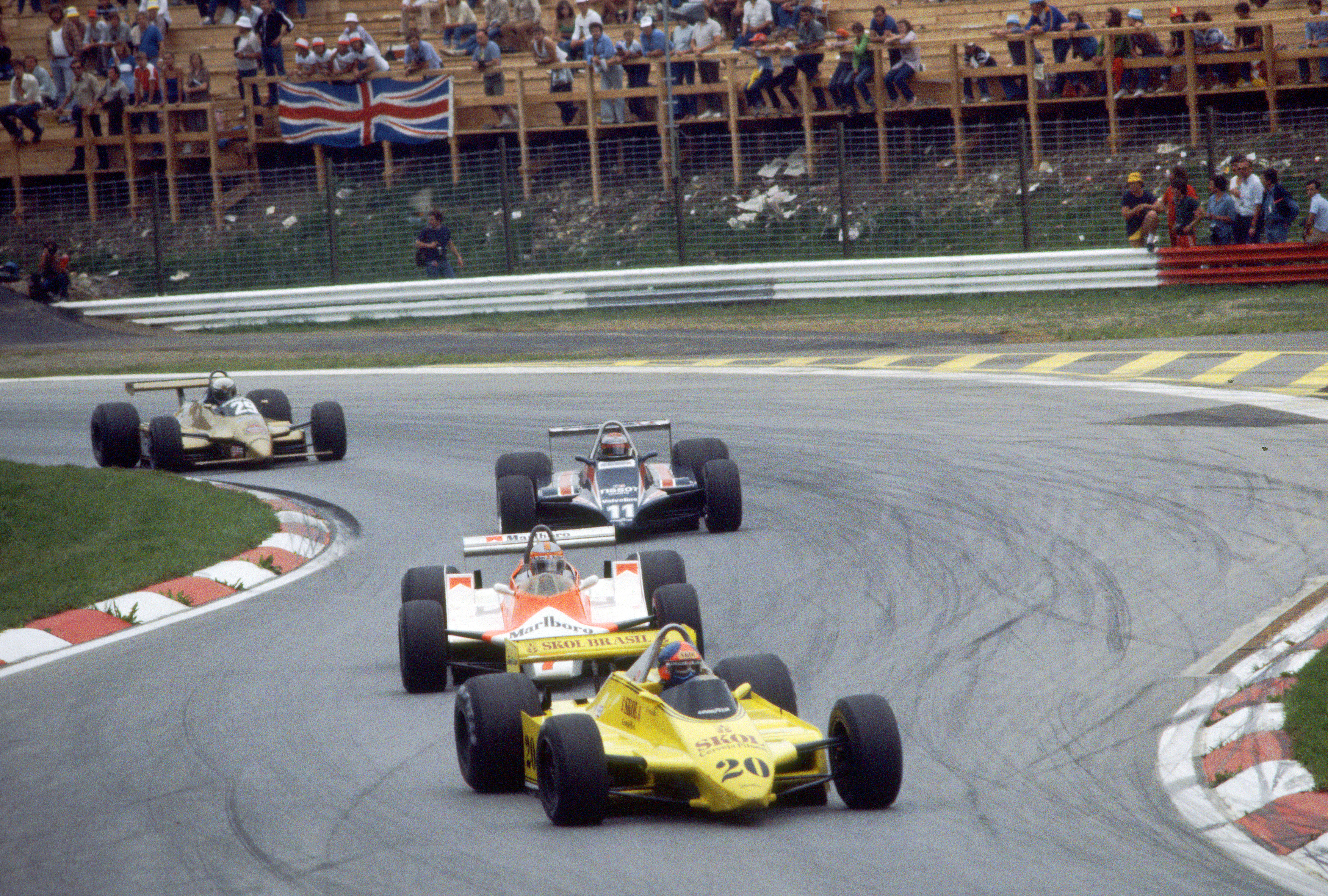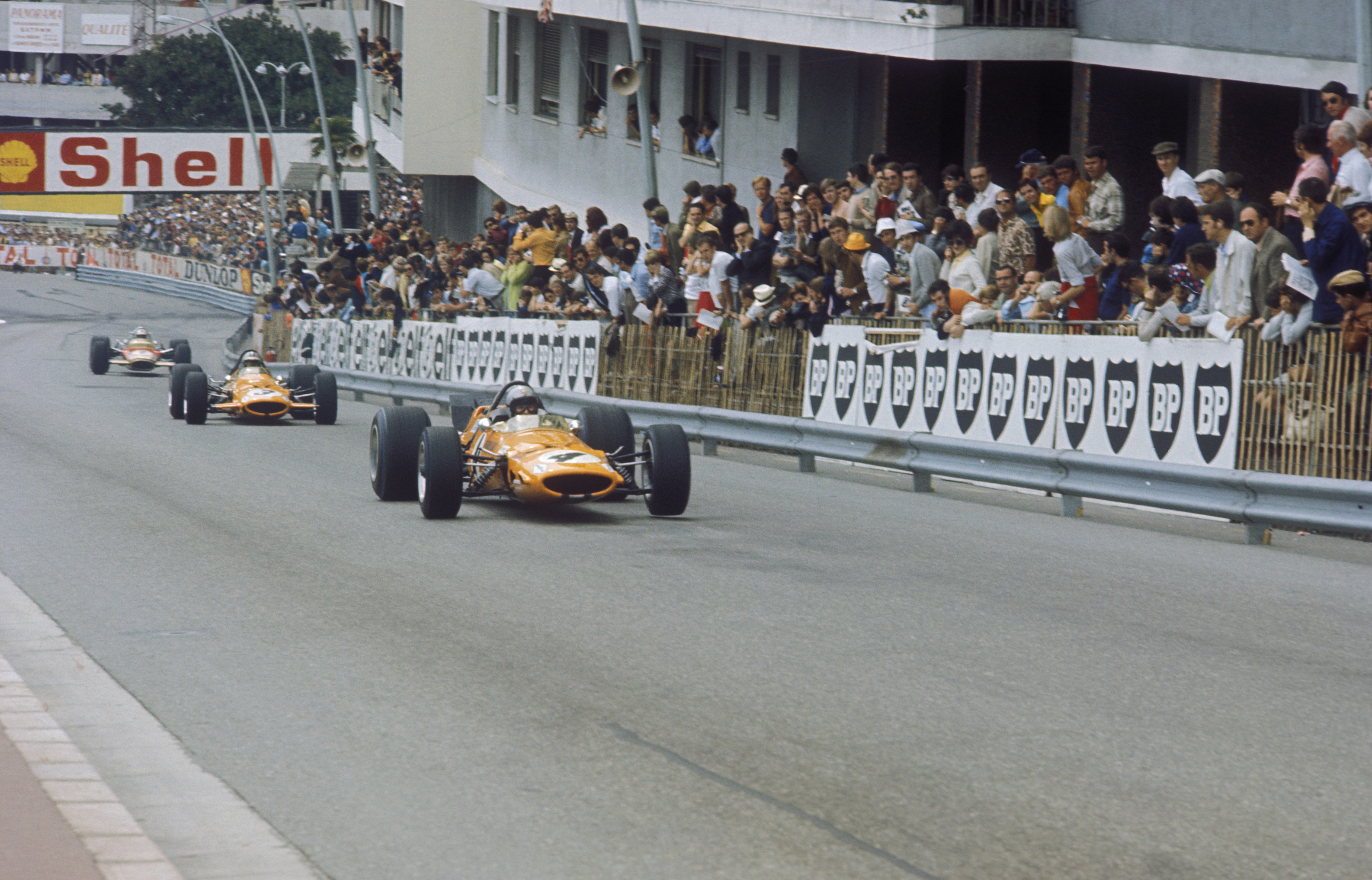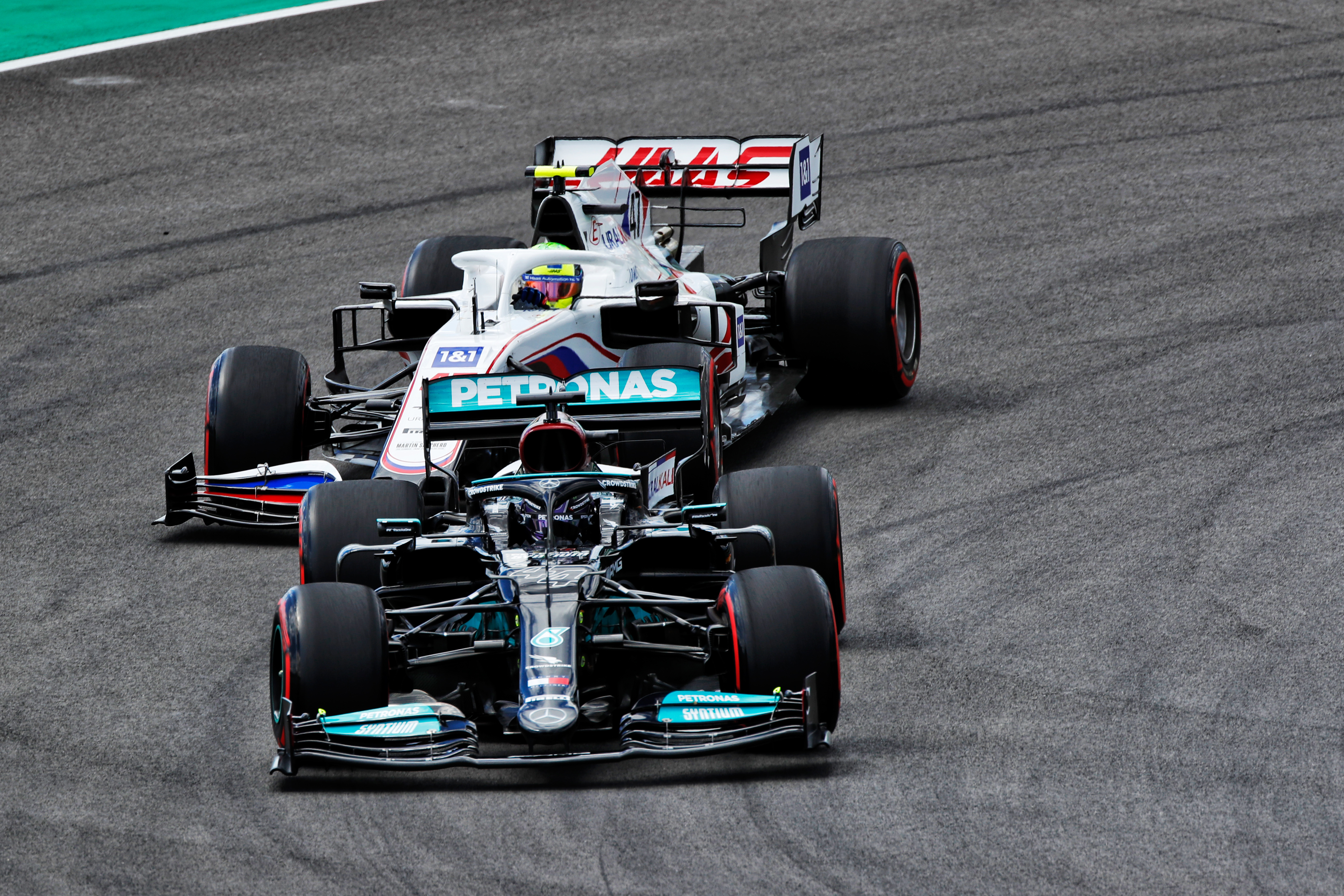Up Next

Double Formula 1 world champion Emerson Fittipaldi believes F1’s upcoming comprehensive rule changes will make it as open as it was when he was winning titles in the 1970s.
Fittipaldi, who took the 1972 title with Lotus and the ’74 crown with McLaren, thinks the combination of the cost cap and development restrictions under the new rules should make F1 as much of a level playing field as he feels it was in his own heyday.
“I think the cost limitation will definitely bring the teams more together,” Fittipaldi told The Race. “I think it’s going to make more even racing, and one factor, very important, the young drivers that will join different teams, they’ll have a much better chance to show their talents.
“It’s going to be, again, closer racing, more chance for young talent coming through to Formula 1 to show the talent.
“When you have a limitation of budget it’s going to bring the smaller teams a much better chance. In one way, when I was in Formula 1 from 1970 to ’80, there was a balance, because – there was not a limitation for budget – but, very similar cars with the V8 Cosworth, plus the Hewland gearbox, and that made the teams very even.

“Even a smaller team could run fast and have incredible races. I think that’s going to come back again.”
During Fittipaldi’s 11 seasons on the F1 grid, an average of five different teams won races each year and the titles were shared by Lotus, Tyrrell, McLaren, Ferrari and Williams.
In the last 11 years, the average number of teams winning per season is three, and only Red Bull and Mercedes drivers have won championships.
What was F1’s Cosworth era?
Mark Hughes

The Cosworth era of F1 ran from the late 1960s to early 1980s, a truly remarkable run when most of the grid was powered by the same engine, the Ford Cosworth DFV 3-litre V8. It was the ultimate customer engine in that it was not only widely available to anyone who wanted to buy one – initially at a price of just over £8,000 in 1968 (about £142,000 in 2021 terms, adjusting for inflation) – but it was the best engine of its time. Ferrari, from 1970, made its own flat-12 which was a competitive match and often had a small edge in power, but rarely a decisive one.
The DFV was powerful, economical (enabling the car to be designed with a smaller tank), efficient (enabling the radiator sizes to be vastly reduced from what they’d been pre-DFV) and strong enough to be used as a structural part of the car. It was the engine any chassis designer of the time would have specified given a clean sheet of paper – yet it was available off the shelf.
As a result, a whole generation of teams came to the fore, helping cement the ‘British invasion’ of the sport which had taken hold in the late 1950s and into the ‘60s which had been based around the similar off-the-shelf competitiveness of the Coventry Climax motors. But the DFV was more aggressively competitive with the Ferrari and BRM competition than the Climax had ever been, so the British teams were no longer at a power disadvantage.
Its simplicity and elegant engineering meant it was also wonderfully practical to run. In the late ‘60s, a typical F1 team would take around 2-3 hours to change a DFV. An engine change on the Matra V12 would take around eight hours.
Cosworth kept developing the DFV and so while it debuted – on an exclusive basis to Team Lotus initially, in 1967 – with just over 400bhp, by the end of its competitive life, in DFY 1982 trim it was good for around 515bhp. After the Lotus exclusivity deal ended for 1968 onwards, the DFV gave competitive life to McLaren which in its first couple of years had stuttered along with uncompetitive engines. In ’68, with a DFV in the back, it was an instant title contender.

Brabham returned as a competitive force in 1969 after replacing its outdated Repcos with the DFV. Williams came to life from the ready availability of the engine, not to mention dozens of grid-filling teams which have since passed into history.
It was the Cosworth that arguably enabled the Bernie Ecclestone era of F1 to form, as it gave him a strong base of British teams which was the nucleus of FOTA, the body which negotiated on behalf of them the conditions of their group appearance at the races.
It was arguably the greatest racing engine there has ever been and a monument to its creator Keith Duckworth.
Will cost cap F1 be as open as Fittipaldi imagines?
Edd Straw

The cost cap, the baseline figure for which drops by $5million to $140million in 2022, combined with the more equitable allocation of the chunk of Formula 1’s revenues that was established by the latest Concorde Agreement and measures such as the sliding scale of aerodynamic testing that gives the least successful teams more windtunnel/CFD time will collectively have a levelling effect in F1. But the impact will neither be immediate, nor perfect, although its instant effect has at least been to stop the big teams from continuing to pull away.
The historic big spenders will continue to have an advantage because of what they’ve invested in personnel, facilities and expertise over the years. The quality of a car is still the sum of a team’s design know-how, expertise and methodologies and the teams that have done the most work in that area over the years – ie the ones with the biggest research and development budgets – carry an advantage. But it will be one that gradually diminishes over time.
There will always be ways for those with the most resources to spend money for an advantage, the obvious one being on drivers, who are exempt from the cost cap. On top of that, there are countless other ways that money can be thrown at F1, although the core activity of designing, building, developing and operating a grand prix car is now tightly controlled financially. With brute force spending wars now no longer an option, over time the overall potential of every team should settle at a roughly similar level.
This all depends, of course, on how effective the cost cap really is at controlling the spending. The financial regulations are rigorous and include a potent mechanism for punishing transgressors with extreme penalties for egregious infractions – although we’ve yet to see them challenged in a test case that will inevitably come one day to test Ross Brawn’s claim that the cost cap “has teeth”. A different kind of war, finding ways to maximise what is permitted under the cost cap, is now being waged and we’ve yet to see who the winners and losers are from that game.

Whatever happens, there will always be good and bad teams and while the playing field will remain uneven, the most efficient, innovative and well-run teams should over time rise to the top. That’s a big change from previous years where, no matter how spectacularly effective a smaller team was, the big spenders always had far greater potential.
While it’s not quite the good old days when anyone could theoretically design a clever car around a DFV and a Hewland gearbox and get to the front, what is unarguable is that it’s a more healthy and competitive landscape for F1 than the days when spending big was a pre-requisite – but not a guarantee of – success.







